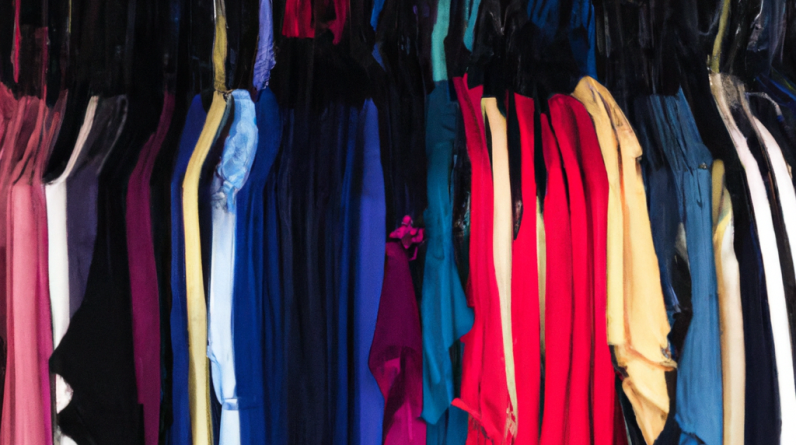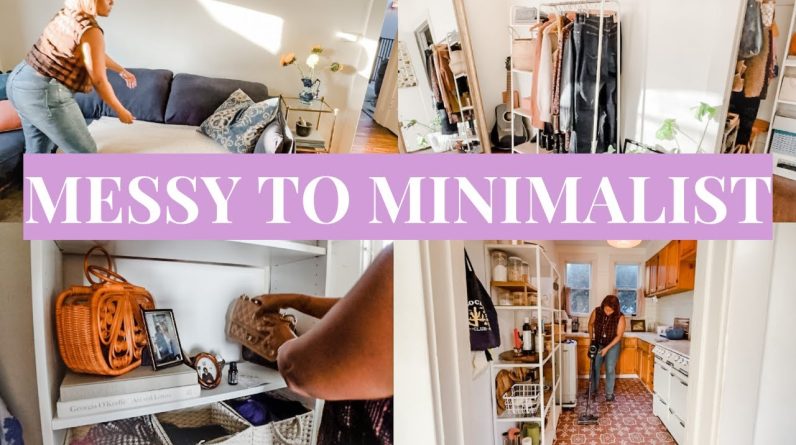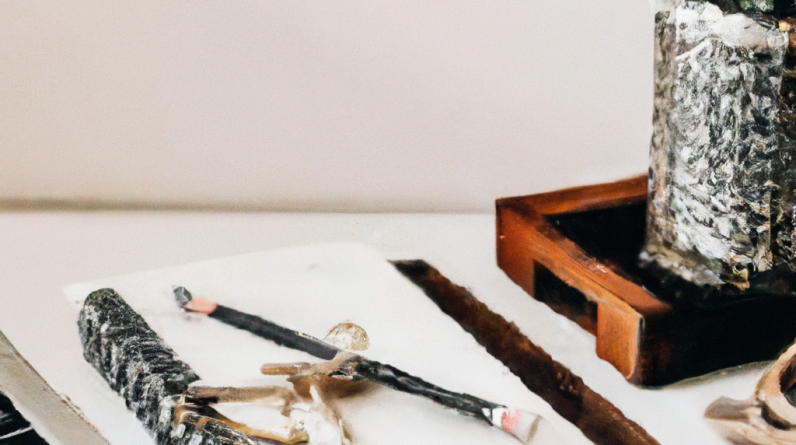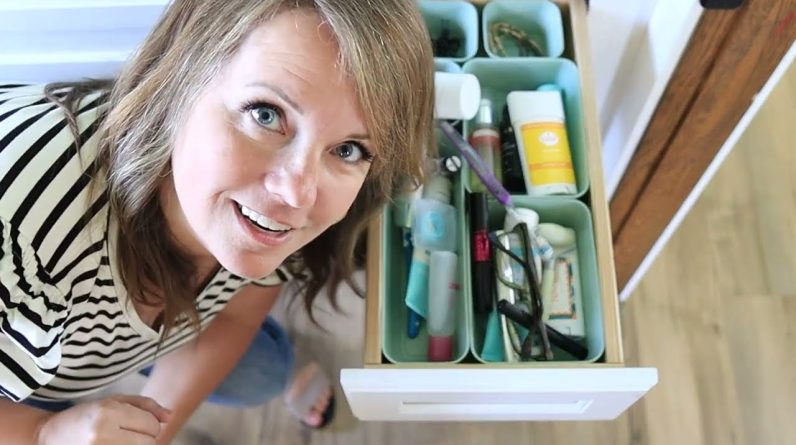
In a world filled with constant distractions and overwhelming choices, finding peace and simplicity can feel like a distant dream. But fear not, because “The Art of Minimalism: A Guide to Decluttering Your Life” is here to help you reclaim your space, your time, and your sanity. This informative blog explores the power of minimalism, offering practical tips and techniques to declutter your physical environment, streamline your daily routine, and cultivate a sense of calm amidst the chaos. Say goodbye to the clutter and hello to a more intentional and fulfilling life.
Table of Contents
Understanding Minimalism
What is Minimalism?
Minimalism is a lifestyle and mindset that emphasizes simplicity, intentionality, and the removal of excess physical and mental clutter. It focuses on prioritizing what truly matters and letting go of unnecessary possessions, commitments, and distractions. At its core, minimalism is about living with purpose and finding contentment by owning less and experiencing more.
The Benefits of Minimalism
Embracing minimalism offers a multitude of benefits for both our physical and mental well-being. By decluttering our physical spaces, we create a sense of calm and order, which can reduce stress and improve overall mental clarity. Minimalism promotes a more intentional and thoughtful approach towards consumption, helping us break free from the constant cycle of acquiring and discarding possessions. Additionally, minimalism encourages us to prioritize experiences and relationships over material possessions, leading to a more meaningful and fulfilling life.
Minimalism in Everyday Life
Minimalism is not just about decluttering our physical spaces; it extends to every aspect of our lives. It means simplifying our schedules, reducing digital clutter, and adopting a minimalist mindset in our relationships and daily activities. By incorporating minimalism into our everyday lives, we can create a more harmonious and focused environment that aligns with our values and goals.
Assessing Your Clutter
Recognizing the Signs of Clutter
Clutter can manifest in various forms, both visible and invisible. Visual clutter includes excessive belongings, disorganized spaces, and crowded surfaces. Invisible clutter, on the other hand, refers to mental and emotional burdens, such as unresolved conflicts or overwhelming responsibilities. Recognizing the signs of clutter is the first step in addressing it and creating a more minimalist lifestyle.
The Impact of Clutter on Your Life
Clutter has a significant impact on our well-being and daily lives. Physically, clutter can make it challenging to find what we need, resulting in wasted time and added stress. Mentally, clutter can create a constant sense of overwhelm and distract us from focusing on what truly matters. Emotionally, clutter may prevent us from experiencing peace and contentment as our surroundings are in a constant state of chaos. Understanding the negative impact of clutter can motivate us to take action and create a more minimalist and organized environment.
Identifying Areas for Decluttering
To begin the decluttering process, it is essential to identify areas of your life that could benefit from simplification. This could include physical spaces such as your home, workspace, or car, as well as intangible areas like your digital files, commitments, or relationships. By identifying these areas, you can prioritize where to start and create a plan to declutter effectively.

This image is property of Amazon.com.
The Decluttering Process
Setting Decluttering Goals
Before diving into decluttering, it is helpful to establish clear goals that align with your vision of a minimalist lifestyle. These goals can be specific, such as decluttering your closet or reducing the number of digital subscriptions, or more general, such as creating a more peaceful and organized living space. Setting achievable goals not only provides direction but also helps track progress and maintain motivation throughout the decluttering process.
Creating a Decluttering Plan
A decluttering plan helps break down the overwhelming task of decluttering into manageable steps. Start by prioritizing the areas you identified during the assessment process and create a timeline for each. Consider allocating dedicated blocks of time for decluttering, and be realistic about what you can accomplish within each session. Breaking the process into smaller tasks and focusing on one area at a time will prevent you from feeling overwhelmed and increase your chances of success.
Approaching Decluttering Room-by-Room
A practical approach to decluttering is tackling one room or area at a time. Begin by removing all items from the space and carefully assess each item’s values. Sort them into categories such as keep, donate, sell, or recycle. When deciding whether to keep an item, consider if it serves a purpose, brings you joy, or aligns with your goals and values. Once you have sorted through all items, proceed to organize and return only the essentials to the space. A room-by-room approach simplifies the decluttering process and allows you to see visible progress along the way.
Practical Tips for Decluttering
Getting Started: The 4-Box Method
When starting your decluttering journey, the 4-Box Method can be a helpful tool. It involves labeling four boxes or bags with categories: keep, donate, sell, and trash. As you declutter, place each item into the appropriate box or bag. This method creates a systematic approach to decision-making and prevents you from getting stuck on individual items. Once finished, dispose of the trash, set aside items for donation or selling, and organize the items you choose to keep.
Sorting and Categorizing Your Belongings
To effectively declutter, sort and categorize your belongings. Create categories that make sense to you, such as clothing, books, electronics, or sentimental items. By sorting your possessions, you can easily identify duplicates, items you no longer use or need, and those that hold sentimental value. Categorization helps streamline the decision-making process and makes it easier to let go of items that no longer serve a purpose in your life.
Letting Go of Sentimental Items
One of the most challenging aspects of decluttering is letting go of sentimental items. To overcome the emotional attachment, ask yourself if the item brings you true joy, adds value to your life, or contributes to your overall well-being. Consider taking photos of sentimental items to preserve the memories without having to keep the physical object. Additionally, if there are items you can’t part with at the moment, create a designated space to store them neatly and revisit the decision at a later date.
Organizing and Storing Essentials
Once you have decluttered, organizing and storing essentials is crucial to maintain a minimalist lifestyle. Invest in storage solutions that align with your space, such as storage containers, shelves, or drawer organizers. Establish designated places for each item, ensuring they are easily accessible and visible. By creating an organized system, you can easily find and retrieve the items you need while preventing future clutter.
Managing Digital Clutter
In today’s digital age, digital clutter also contributes to our overall sense of overwhelm. To manage digital clutter, start by clearing out your email inbox and unsubscribing from unnecessary newsletters and subscriptions. Organize files on your computer by creating folders and deleting duplicates or outdated documents. Consider implementing regular digital decluttering sessions to keep your digital spaces clean and organized.

This image is property of Amazon.com.
Adopting a Minimalist Mindset
Shifting Your Perspective on Possessions
Adopting a minimalist mindset involves shifting your perspective on possessions. Instead of valuing material wealth and accumulation, focus on owning items that bring genuine joy, serve a purpose, or align with your values and goals. Understand that possessions do not define your worth or happiness, and that true contentment comes from within yourself, not from external objects.
Prioritizing Experiences over Things
Minimalism encourages us to prioritize experiences and relationships over material possessions. By investing our time, energy, and resources into creating meaningful memories and cultivating deep connections, we can find greater fulfillment and happiness. Shift your mindset towards valuing experiences and make a conscious effort to engage in activities that bring you joy and enrich your life.
Changing Consumer Habits
Minimalism challenges our consumerist culture and invites us to reassess our purchasing habits. Instead of mindlessly buying for the sake of buying, adopt a more intentional approach to consumption. Before making a purchase, ask yourself if the item truly adds value to your life and if it aligns with your minimalist goals. Opt for quality over quantity, and focus on investing in items that are durable, functional, and serve multiple purposes.
Embracing Simplicity and Mindfulness
Embracing simplicity and mindfulness are key aspects of living a minimalist lifestyle. Simplify your daily routines and commitments by focusing on what truly matters and eliminating unnecessary distractions. Practice mindfulness by being fully present in each moment and appreciating the beauty and simplicity of the present. By embracing a minimalist mindset, you can create a greater sense of peace, clarity, and purpose in your life.
Creating Functional Spaces
Design Principles for Minimalist Spaces
When creating minimalist spaces, certain design principles can guide you towards simplicity and functionality. Embrace clean lines, limited color palettes, and open spaces to create a visually uncluttered environment. Utilize natural light and incorporate minimalistic furniture and décor that serve a purpose while avoiding excessive ornamentation. Let go of unnecessary accessories and keep surfaces clear to maintain simplicity and promote a calming atmosphere in your space.
Choosing Essential Furniture and Decor
In minimalist spaces, furniture and decor should serve a functional purpose and align with your minimalist goals. Opt for furniture that is sleek and versatile, with clean lines and a neutral color palette. Choose decor items that bring you joy or hold personal significance, while avoiding excessive clutter or ornate embellishments. Remember that having less furniture and decor can create a more spacious and serene atmosphere in your living spaces.
Maximizing Storage Solutions
Effective storage solutions are essential for maintaining a minimalist lifestyle. Invest in storage options that maximize space and allow for easy organization. Utilize built-in cabinets, shelves, and drawers to keep belongings out of sight and create a clutter-free environment. Make use of under-bed storage, hanging organizers, and multi-functional furniture to optimize space in smaller living areas. Prioritize functional and accessible storage solutions to keep your belongings organized and minimize visual clutter.
Maintaining Order and Organization
Once you have created functional spaces, maintaining order and organization is key to sustaining a minimalist lifestyle. Regularly assess your belongings and declutter as necessary to prevent the accumulation of unnecessary items. Establish a cleaning and organizing routine that suits your lifestyle, and dedicate time for maintaining tidiness and order in your spaces. By consistently practicing organization and decluttering, you can create a serene and welcoming environment that supports your minimalist goals.
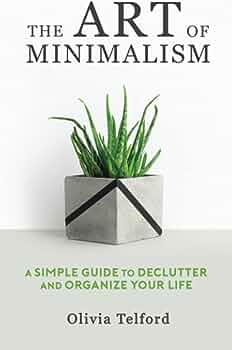
This image is property of Amazon.com.
Minimalism and Mental Well-being
Reducing Stress and Overwhelm
One of the main benefits of minimalism is its positive impact on mental well-being. By decluttering our physical spaces and simplifying our lives, we reduce stress and overwhelm. A clutter-free environment promotes a sense of calm and serenity, allowing us to focus on what truly matters. By minimizing distractions and eliminating unnecessary belongings, we create space for mental clarity and peace.
Improving Focus and Productivity
Minimalism can greatly improve focus and productivity. Without the visual and mental clutter that distracts us, we can concentrate on our tasks and goals more effectively. A minimalist environment provides fewer opportunities for procrastination and encourages us to prioritize our time and energy. By eliminating unnecessary distractions, we can enhance our focus and accomplish more in less time.
Promoting a Calm and Peaceful Environment
The simplicity of a minimalist lifestyle promotes a calm and peaceful environment. By reducing visual and mental clutter, we create a space that fosters relaxation, tranquility, and well-being. A clutter-free home provides a sanctuary where we can unwind, recharge, and find solace in our surroundings. The peaceful atmosphere of minimalism has a profound impact on our mental and emotional state.
Enhancing Mental Clarity and Creativity
A minimalist lifestyle enhances mental clarity and creativity. With fewer distractions and a clear physical space, our minds are free to focus and explore new ideas. Minimalism invites us to evaluate our priorities, making room for creative pursuits and personal growth. By simplifying our lives, we can tap into our inner creativity, think more clearly, and find innovative solutions to challenges.
Sustainable Minimalism
Embracing Eco-friendly Practices
Minimalism and sustainability go hand in hand. Embracing eco-friendly practices aligns with the minimalist ethos of owning less and being mindful of our impact on the environment. Reduce waste by recycling, composting, and minimizing single-use items. Embrace energy-efficient appliances, reduce water consumption, and opt for sustainable materials when making purchasing decisions. By integrating sustainable practices into your minimalist lifestyle, you contribute to a better future for both yourself and the planet.
Reducing Waste and Consumption
Minimalism inherently promotes reducing waste and consumption. By adopting a more intentional approach to the items we bring into our lives, we can avoid unnecessary purchases and reduce the amount of waste generated. Choose quality over quantity, repair items instead of replacing them, and buy second-hand or from ethical and sustainable brands. By curating a more conscious and mindful consumption pattern, we can minimize our environmental footprint.
Choosing Quality over Quantity
In a minimalist lifestyle, quality prevails over quantity. Rather than accumulating numerous cheap or low-quality items, focus on investing in durable, long-lasting products. Quality items not only bring more satisfaction and value but also reduce the need for frequent replacements, contributing to a more sustainable and minimalist lifestyle. By choosing quality over quantity, we can create a curated and purposeful environment while minimizing waste.
Supporting Ethical and Sustainable Brands
When making purchasing decisions, consider supporting ethical and sustainable brands. Minimalism encourages us to be intentional about the companies and products we choose to support. Research and prioritize brands that align with your values, such as those committed to fair trade, labor rights, and environmentally friendly practices. By supporting ethical and sustainable brands, we contribute to positive change while ensuring that our belongings reflect our principles.
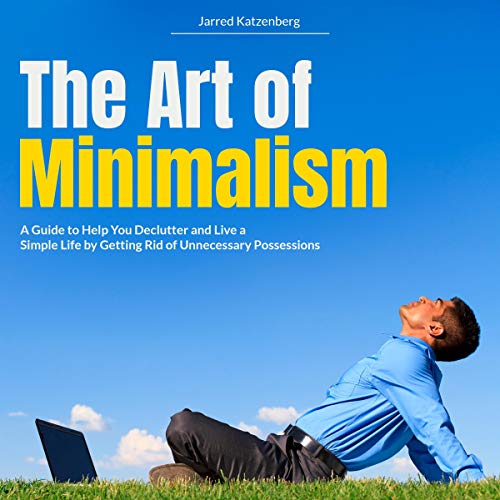
This image is property of Amazon.com.
Minimalism in Relationships
Streamlining Social Commitments
Minimalism extends beyond physical possessions and encompasses our relationships as well. Streamlining social commitments involves evaluating the relationships and activities that truly bring value and joy to our lives. Consider the social engagements and commitments that align with your priorities and contribute positively to your well-being. By letting go of excessive obligations, you create space for deeper connections and more meaningful relationships.
Fostering Meaningful Connections
Minimalism encourages us to foster meaningful connections with others. By focusing on quality relationships rather than quantity, we can invest our time and energy in those who truly matter to us. Prioritize spending quality time with loved ones, engaging in deep conversations, and building strong connections. By surrounding ourselves with genuine and meaningful relationships, we enrich our lives and find greater contentment.
Letting Go of Toxic Relationships
One of the challenges of minimalism is letting go of toxic relationships. While challenging, removing toxic individuals from our lives is essential for our well-being. Evaluate the relationships that drain your energy, cause stress, or hinder personal growth. Acknowledge that letting go of toxic relationships is not only necessary but also liberating. By creating boundaries and surrounding yourself with positive influences, you create space for healthier and more fulfilling connections.
Practicing Minimalism in Family Life
Minimalism can also be implemented in family life, benefiting both parents and children alike. Encourage open communication and involve children in discussions about minimalism, helping them develop an appreciation for experiences over things. Teach them the value of giving back by donating toys and clothes they no longer need. Set limits on excessive gifts and prioritize quality time together instead. By incorporating minimalism into family life, you can create a more peaceful, intentional, and fulfilling environment.
Maintaining a Minimalist Lifestyle
Regular Decluttering and Maintenance
Maintaining a minimalist lifestyle requires regular decluttering and maintenance. Set aside time periodically to reassess your possessions, eliminate any unnecessary items, and ensure that your spaces remain clutter-free. Regularly decluttering helps prevent the accumulation of excess belongings and reinforces the minimalist mindset.
Resisting the Urge to Accumulate
To maintain a minimalist lifestyle, it is crucial to resist the urge to accumulate. Be mindful of your purchasing habits and question whether an item truly aligns with your minimalist goals before bringing it into your life. Practice gratitude for what you already have and focus on experiences and relationships rather than material possessions.
Setting Boundaries with Material Possessions
A key aspect of maintaining a minimalist lifestyle is setting boundaries with material possessions. Establish rules for yourself, such as only owning a certain number of clothing items or not bringing in new items without getting rid of something else first. By setting limits, you prevent the accumulation of unnecessary belongings and maintain a clutter-free environment.
Finding Balance in Minimalism
Finding balance is essential in maintaining a minimalist lifestyle. While minimalism encourages simplicity and mindful consumption, it is important to find a balance that works for you. Recognize that minimalism looks different for everyone, and it is not about achieving perfection. Strive for a balance that brings you joy, aligns with your values, and enhances your overall well-being.
In conclusion, minimalism offers numerous benefits for our physical and mental well-being. By decluttering our physical spaces, adopting a minimalist mindset, and embracing sustainability, we create a more intentional, peaceful, and fulfilling life. Through mindful consumption, cultivating meaningful relationships, and designing functional spaces, we can effectively declutter our lives and find balance in the art of minimalism.
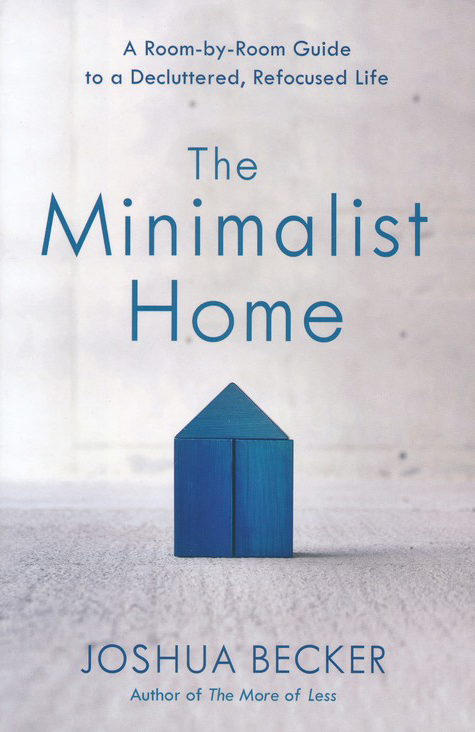
This image is property of g.christianbook.com.




